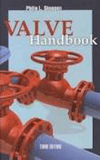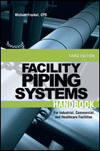PVF Forum: PVF Globalization -The User's Perspective

The challenges put forth in today's ultra-competitive Engineering/ Procurement/ Construction (EPC) marketplace allow for very little room for error and uncertainty, especially so when related to the great complexities involving specification, design, fabrication, installation, and service life of pressure-containing components and systems. End users such as major oil and gas companies demand high reliability and proven technologies when planning for new ventures such as grass-roots refineries, new units in existing plant sites, compliance work to meet federal regulations, and many other developments that typically experience significant consumption of piping materials. Also, keeping things running demands constant support and supply of pipe, fittings, flanges, and valves, all very important requirements throughout the typical petrochemical and refining plant life-cycle.
Our clients' contractual demands are well defined and known. Most involve a combination of schedule certainty, price certainty, and undeniably, high levels of quality, reliability, and safety. To that end, our clients also demand “faster, better, cheaper,” with compressed schedules and performance guarantees often driving goals that can be in conflict in the heat of the construction phase. More and more, the typical client is less sensitive to the actual manufacturing origin of the products used in building their plants, and cares more for the best price for the product and service provided by the EPC contractor. For pipe, valves, and fittings, that typically means suitable and fit for purpose and within the limits and tolerances of the governing specification, and not much else.
Most of us have witnessed a step-change shift in the location of the manufacturing plants that provide the majority of the standardized, interchangeable piping commodity items. As it appears today, the more standardized the piping commodity, the more likely it is to be supplied from an emerging source, such as China and South Korea, India, and in some cases, Thailand, Malaysia, and other low-cost production economies, including many former Soviet-bloc nations. This is certainly true in the manufacture of cast commodity gate, globe, and check valves. Also, high-volume consumption items, such as fittings and flanges in standard grades and sizes of carbon steel and, to an increasing extent, 304 and 316 grade stainless steels, are being produced in countries that, only as recently as 10 years ago, most people would not even consider a viable source of products of reasonable quality and reliability.
Quality improvement
It may have been fair to say that products produced in specific regions were of suspect integrity and, in many cases, poor reputations were deserved based on absence of rigorous concerns over quality. But today, much of that is changing, with the direct expansion of American and European companies into regions that greatly benefit from sophisticated Western manufacturing technologies and effective applications of proven quality assurance and quality control. For example, I recently received a manufacturer pre-qualification package for a new manufacturing plant that uses top-of-the-line German metal-forming equipment, American automation and control systems, and ultra-sophisticated Swiss and German testing and laboratory equipment. The plant is located in India, but the base metal materials used to make the plant's product output don't only come from India. The steel also comes from Germany, England, France, Korea, and even the Ukraine and Kazakhstan. As well, take a look at where most commodity valve castings are produced, yet the product may be sold with a different location as to the country of origin.A few months ago, I was visiting a valve manufacturer in Houston. The QA/QC documents were in perfect order along with the shop work ticket, and I saw certified mill test reports for materials used in the construction of the valve as follows: castings from Mexico, trim material from Germany and Sweden, plate from Russia, fasteners from Italy and France, forgings from Italy and India - all components used to make a very high-quality, highly engineered, specialized valve product made here in the USA. All of those components had to be produced with very rigorous manufacturing techniques and tight quality controls and, together with an efficient and sophisticated American plant, come together to make up a world-class product from a U.S. source.
Today, the perception of quality differences between traditional Western sources and emerging sources such as China and India is diminishing, and this can be said mainly for the mainstream commodity piping materials. Many years ago, while on a job in Saudi Arabia, I had the opportunity as the project manager to control all aspects of the entire piping spectrum required for the job, and that involved a lot of inbound material inspection and testing. I can tell you first-hand that just because a product is made in the USA, France, Germany, Italy, Spain, UK, Canada, or Japan doesn't guarantee it will be 100% defect-free every time from the factory. Today, it's also fair to say that just because something is made in China or India or Malaysia doesn't automatically mean it is of inferior quality. In any case, no matter the origin, methodical and documented quality control and inspection using trained and certified personnel must never be overlooked in its importance.
“True” origins
What is important to the engineering contractor in this regard is more transparency in the knowledge of the “true” origin of a product. Although just a few years ago, determining the “true” origin of a cast commodity valve was akin to a “cloak and dagger” exercise, more and more companies are being totally open about where their products are actually made, engendering a growing level of trust that will ultimately strengthen relationships throughout the supply chain - between the end user/client, the engineering contractor, the local or regional distributor, and, ultimately, the manufacturer, wherever they are located. In fact, this trend has been recognized to the point that the American Petroleum Institute has issued a revised “Recommended Practice 591” titled “Process Valve Qualification Procedure, Third Edition.” API's industry press release about the Practice speaks to the manufacturer's valve construction and quality assurance program to be “manufacturing facility specific,” and does not cover valves manufactured by other manufacturing facilities, whether owned by the same manufacturer or a third party. I join many others from the EPC contractor community in commending API for issuing this Practice.At this time, I think it's important to understand that while certain areas of American piping component manufacture have come under extreme competitive pressures from low-cost sources, the more specialized and sophisticated “engineering” piping components continue to be produced domestically and in traditional EEC sources. For example, Italy continues to lead the world in producing high-volume forged gate, globe, and check valves with extremely efficient production plants, using the latest robotics. Certainly Italian production of heavy-wall and large size buttweld fittings continues to dominate the global supply base for these more “specialized” piping components. Also, look at where highly engineered, very sophisticated sub-sea drilling and completion systems are made - still, for the most part in American and EEC countries.
Producers of alloy steel piping components continue to be Italy, France, and Germany. Does anyone know of a Chinese source for P-grade seamless pipe or heavy-wall buttweld fittings? Probably not.
Are we going to see a permanent decline in the American manufacturing base for piping components? I would say that would depend on the level of sophistication of the manufacturing process and the technical complexity of the final product. Unless people suddenly lose focus on price sensitivity in a purchase decision, costs for manufacturing commodities will continue to drive towards the lowest possible common denominator. Yet, that is not to say all U.S. manufacturing is in decline.
For example, back home in Texas, the last plant in the United States making jeans for Levi Strauss just closed. All production will move to existing Levi's plants in Mexico and China. But, look where Toyota is building its newest plant to build trucks, in the same town in Texas where Levi's just closed - San Antonio. The Toyota plant is expected to cost $800 million dollars and employ 2,000 persons, with direct benefits to the local economy of an estimated 4,000 total new jobs and more than $1 billion generated to the regional coffers. It's not just a PVF struggle, it's a reality within the globalization of the world economic climate.
A forecast
So where does this all go? I think most of us see a protracted slump that has probably bottomed out. I can't tell you how many persons I've seen make the same statement, “It's as bad as it was in 1983… .” I think we've seen the slowest period, and the expectation is that the coming three to five years could bring a period of activity where we will all be stretched to find resources to meet the demand.Within Fluor, many are very optimistic about the prospects over the next two quarters. We've seen a steady decline in the backlog of proposals until last quarter, and now activity on client proposals for major project activity is increasing significantly. Most of the work for new so-called “mega-projects” is overseas, with regional socio-economic and political priorities greatly adding to the complexities of this type of work.
What does that mean for American PVF manufacturers and distributors? For certain, the U.S. companies that manufacture standard commodity piping items, you're already gone overseas with most of your production, or you're seeking out new joint venture opportunities within emerging countries where low-cost production can be met with brand-name recognition and sophisticated production, QA/QC know-how, and well-developed marketing techniques. Also, that means being absolutely transparent on exactly where things are actually made, while gaining client acceptance and trust that the product is what they expect in terms of quality and reliability. Consolidation is expected to continue in the piping manufacturing sectors, and financial stability or insolvency will determine who will endure.
What does this mean for American PVF distributors? If you look around today, you won't see many of the biggest names that defined the industry in the last 25 years. There are many excellent suppliers with tremendous expertise, but as the mergers in the oil and gas majors have played out, domestic capital expenditures have diminished to the point where people are really struggling in the supply business. As long as the value-added services and meaningful expertise and product knowledge remain imbedded in the PVF supply base, there will be a domestic market to support the huge infrastructure and investment in the existing petro-chem and refining facilities. Distribution plays an essential role in providing the broad array of thousands of piping products to the engineering contractors and end-users, and that, in reality, is something that cannot be serviced on a direct mill relationship basis.
There can be little doubt that the entire domestic manufacturing and service machine is in a competitive struggle with globalization and, the latest term, “outsourcing,” usually means jobs lost to geographic regions where cost structures are substantially below those here at home. Yet, competitive market forces will continue to determine the physical location of many enterprises, and certainly the often painful reminders we constantly hear in the media of American jobs becoming an “export” are not expected to diminish in many sectors.
Looking for a reprint of this article?
From high-res PDFs to custom plaques, order your copy today!





